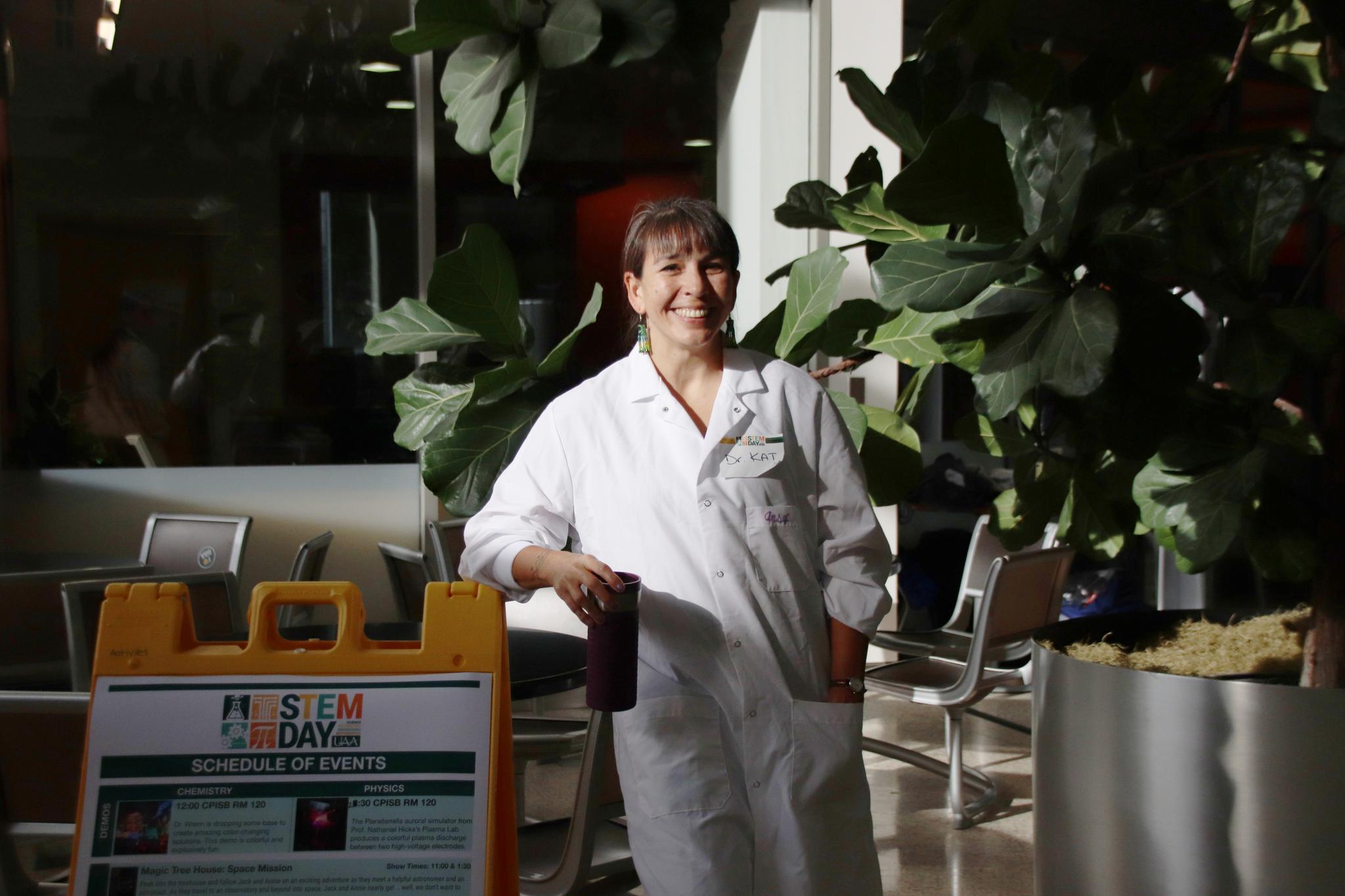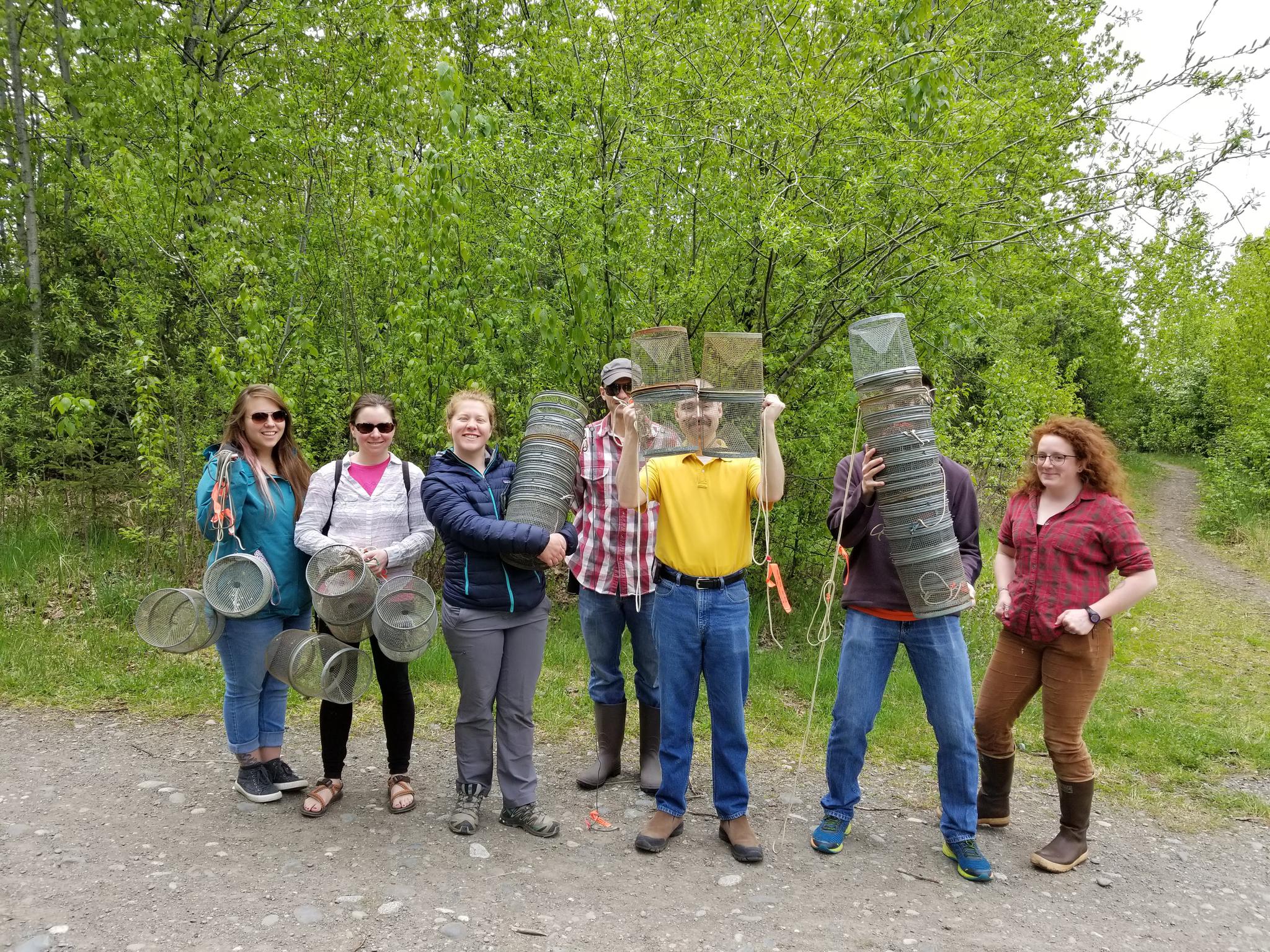Scientist Connects Native Alaskan Heritage to Her Research
I interviewed Dr. McClellan and wrote this profile piece with a word count limit of 800 words.

UAA STEM Day 2019, photo credit to Julita Sadowska
An old bureau sits in the background of Kathy Milligan-McClellan’s cozy wood paneled home office. She reminisces about trying on the jewelry that used to lay inside of it at her grandmother’s house. Her family and culture are always close to her heart. On our Zoom call, she wears a pair of ivory and hematite earrings that stand out next to her dark hair. She mentions that she bought this particular pair from some kids at a craft fair when she lived in Alaska.
Dr. Milligan-McClellan, Ph.D. in Microbiology, spent her childhood in Kotzebue, AK, 26 miles north of the Artic Circle. She is Inupiaq (IHnu-pEE-AAck), one of 13 Alaskan Native groups found in the state. She begins by introducing herself with her native name, Nappaqtuq (NIH-PAH-tUHck). Dr. Milligan-McClellan started her faculty career at the University of Alaska in Anchorage. When asked to describe her research, she says “I'm really interested in the microbes in the gut and how they stimulate our health and keep us healthy.”
In order to study host-microbe relationships, Dr. Milligan-McClellan developed a novel three-spine stickleback fish model. Microbes include any small organism that you need a microscope to see such as bacteria and parasites. Stickleback fish are zebra-striped with three rose thorn-like structures on their backs. They are a unique model system because they are ubiquitous in nature, can adapt quickly to new environments and readily breed in laboratory fish tanks.
Dr. Milligan-McClellan jests, “nobody will allow me to raise 200 germ‑free kids in the lab. So instead of doing that, I use this little fish.”
One of her current lab projects is a longitudinal study comparing different stickleback mating pairs in nine fresh water lakes in Alaska. The Alaskan Department of Fish and Game treated these lakes with rotenone in 2019 to kill the invasive Northern Pike species. She and her collaborators jumped on the chance to introduce specific pairs of sticklebacks into these fish-free lakes. They collect fish annually to understand the evolution of the fish in the different lake ecosystems as well as how fish-microbe interactions evolve overtime.
She shows me a picture of her enthusiastic —water shoe ready— research group in Alaska about to set out 30-50 minnow traps. “I love doing science on the shore of a lake. It's just a different way of doing science. It’s a huge team effort…we very rarely have one person go to a lake. In fact, in our safety protocol, you have to have at least two people because of bears that tend to hang out at the lake.”

One of Dr. Milligan-McClellan’s goals is to communicate her research back to Alaskan Natives. This is in alignment with one of the 13 values she follows as Inupiaq. In her lab they talk about research as relationships and how things change in those relationships. She says “I think part of that is from growing up in a community with the idea that you are not alone, that everything is done with the sense of community.”
In 2020, Dr. Milligan-McClellan became an Assistant Professor at the University of Connecticut. Several factors influenced her move. One unfortunate reason is the systemic racism in Anchorage that plagues not only the university but the entire state. Alaskan Native students face preconceived notions they will not do well in school because they are native. She says “students didn’t see themselves there, so they didn’t stay.” Dr. Milligan-McClellan is the 54th Alaskan Native ever to graduate with a Ph.D. in any field, and the first to graduate in the field of Microbiology.
Each year, she plans to return to Alaska to do field work and to maintain connections with Alaskan Native students. She enjoys showing students how scientific research can benefit their community. Her favorite part of being an academic researcher is to “say to the next generation, look, this is possible, and this is how you can do it." She plans to host Alaskan Native students in her lab and connects with native student groups at any campus she visits.
In her spare time outside of raising her two daughters, she enjoys running, hiking, as well as creating Inupiaq beading. She shows me an intricate needlepoint-like design of vibrant blue flowers made with tiny beads. Additionally, she has made beaded designs of pipettes and stickleback fish, trying to integrate her cultural tradition with science. The beading work can become pendants or other clothing decorations. She has not been able to do as much of this crafting lately with the challenges of running her lab during the pandemic. She says, “It's funny. I haven't been doing (beading), but I keep it next to me all the time.” Dr. Milligan-McClellan holds her community’s traditions close in both her career and personal life.
© 2022 Mary Pat Stangl All Rights Reserved
Post a comment